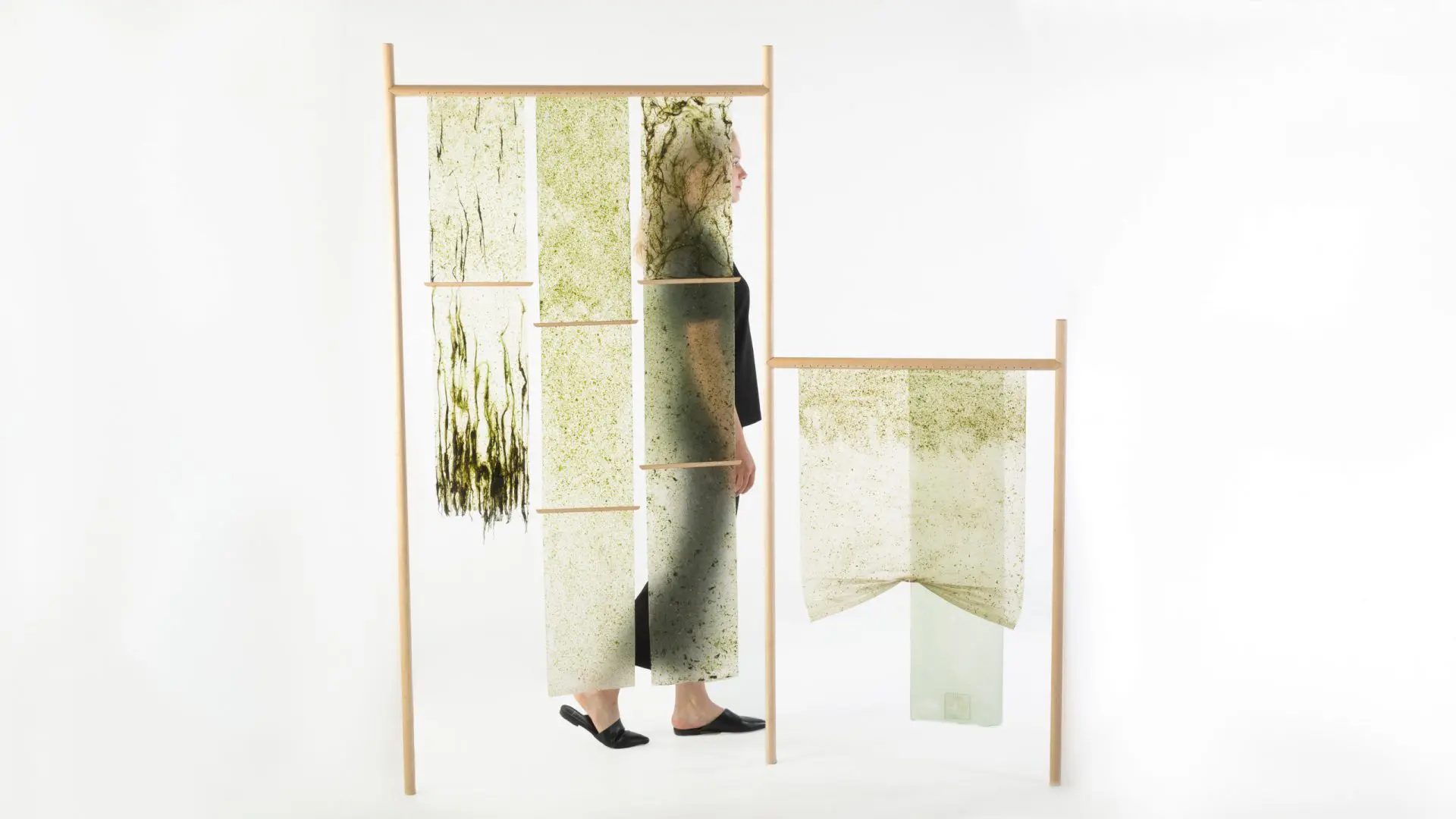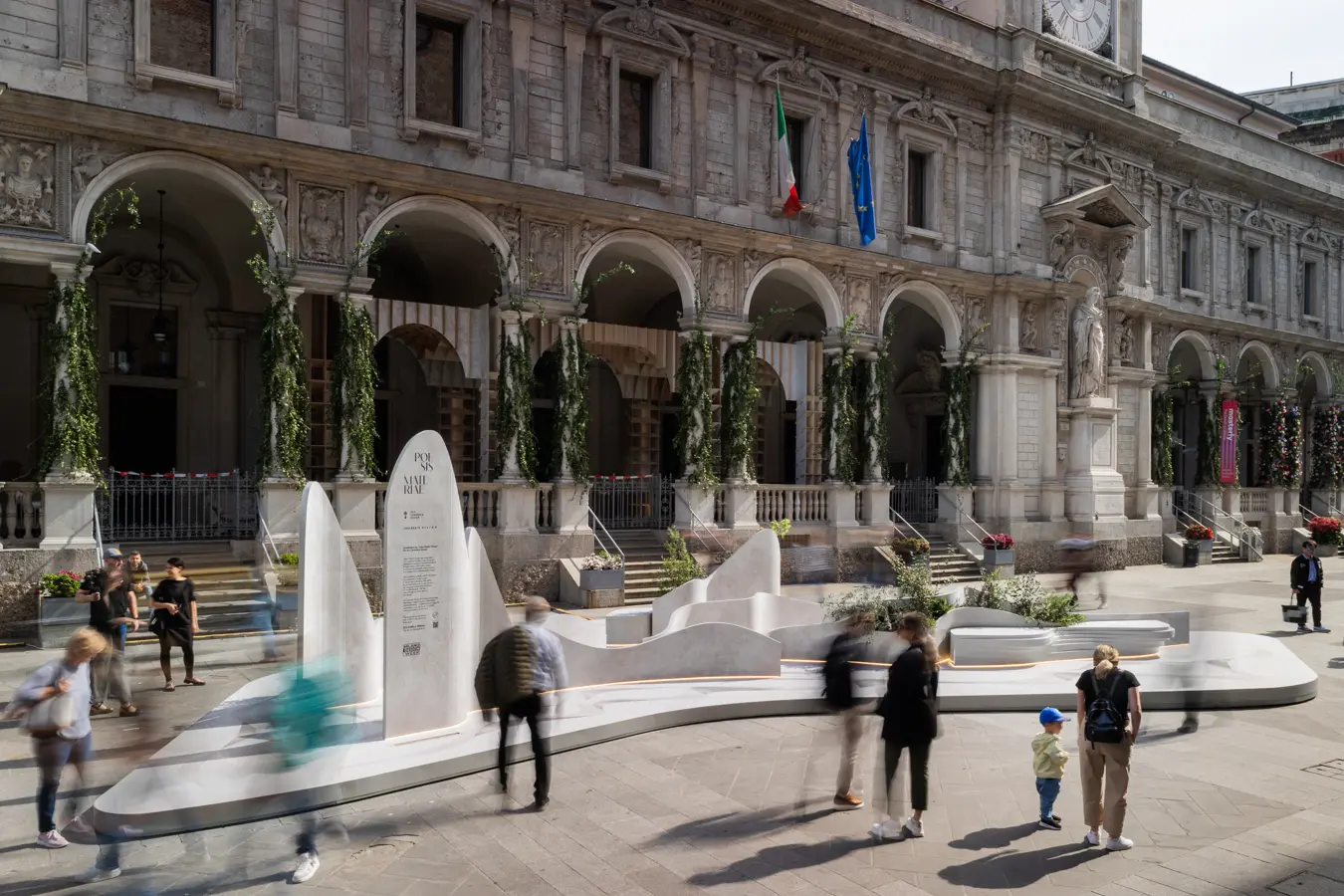Indus (living) algae tiles make rainwater pure
We need a behavioral shift and new solutions to solve the water crisis: this is the challenge that spurred the Bio-ID Lab at the Bartlett School of Architecture
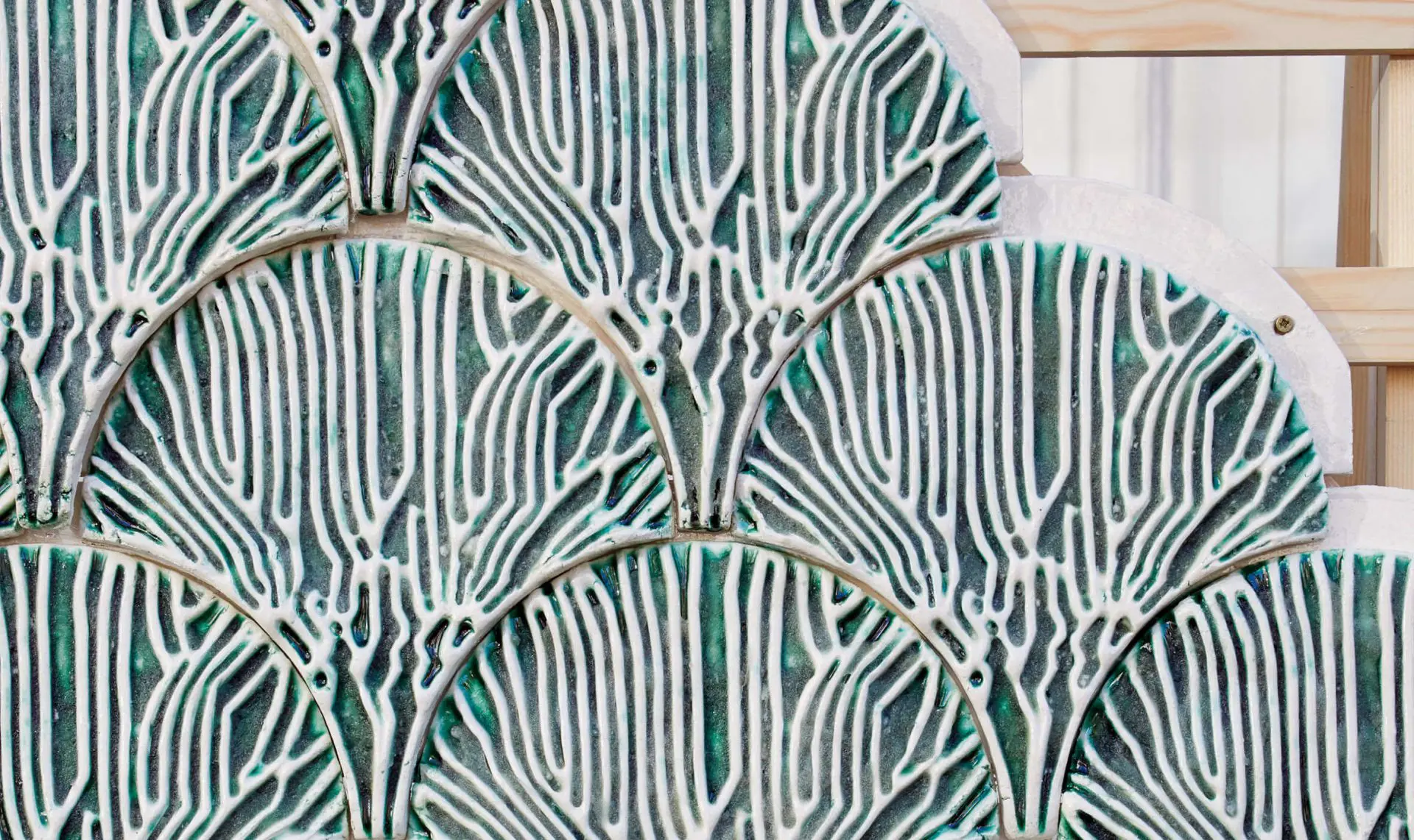
Indus is a bio-integrated modular bioreactor wall system by the Bio-ID Lab, which filters toxic chemical dyes and heavy metals out of water.
Most of the water present on Earth is salty. Do you know what is the total percentage of drinking fresh-water? Just 2.5%. How much water do we waste on average every time we brush our teeth? 7.5 liters. How many people in the world still do not have access to clean water sources? 1 in 6.
Water scarcity already affects more than 40% of the global population and is expected to rise.
Obsolete infrastructure and ineffective water management led to millions of people living with devasting environmental degradation and lacking access to basic sanitation services, while cities continue to waste a billion liters of fresh-water each year [source].
We need a behavioral shift and new solutions to solve the water crisis: this is the challenge that spurred the Bio-ID Lab at the Bartlett School of Architecture part of University College London to create a tile-based modular bioreactor wall system to purify water.
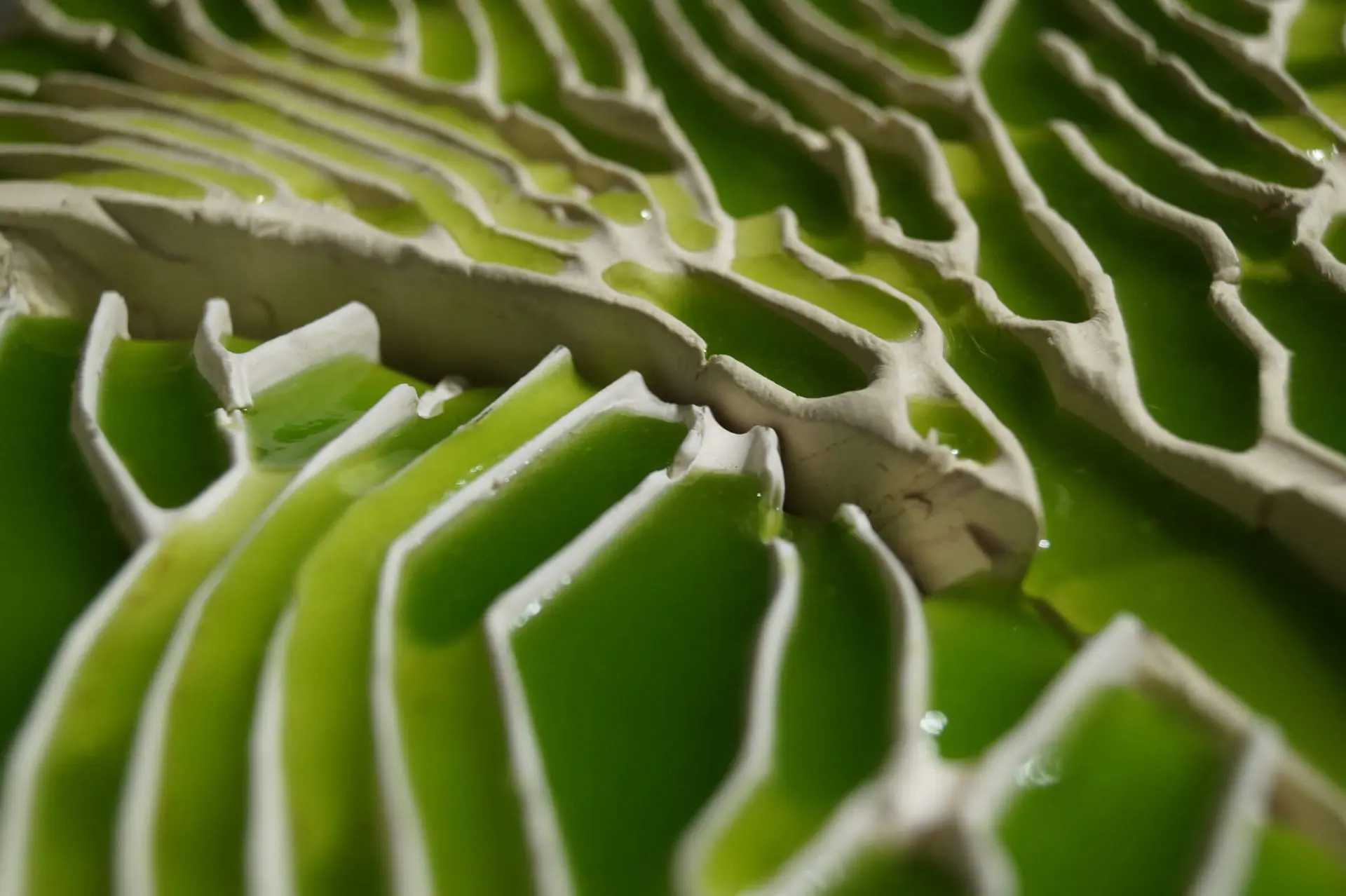
Indus is the recent winner of the A/D/O Mini Water Future Design Challenge and a shining example of how design can learn from our natural environment, while protecting it: composed of modular tile units with vein-like channels and inspired by the structure of leaves, Indus mimics nature’s ability to distribute water.
The tiles contain a preparation of micro-algae suspended with a biological scaffold of a seaweed-derived hydrogel, able to keep the algae alive while also being recyclable and biodegradable.
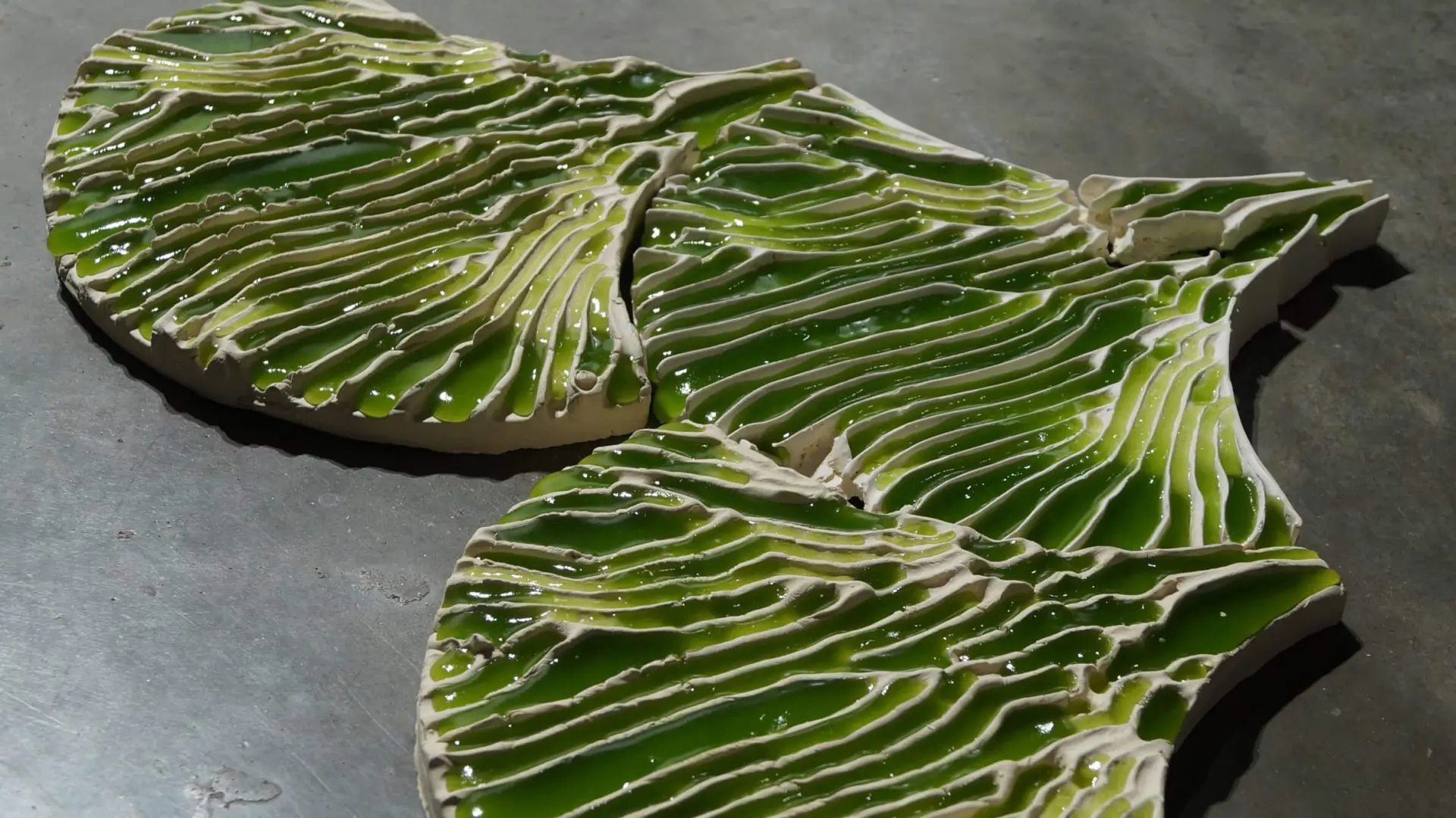
Indus uses the principle of bioremediation in which microorganisms such as algae or fungi are employed to consume and break down pollutants in the environment.
It is based on a symbiotic relationship between algae and pollutants: the algae produce a set of compounds called phytochelatins, which enable them to capture polluting materials, necessary for their growth and sustenance. The compounds remove the impure elements from water and deposit them in the algae’s cells.
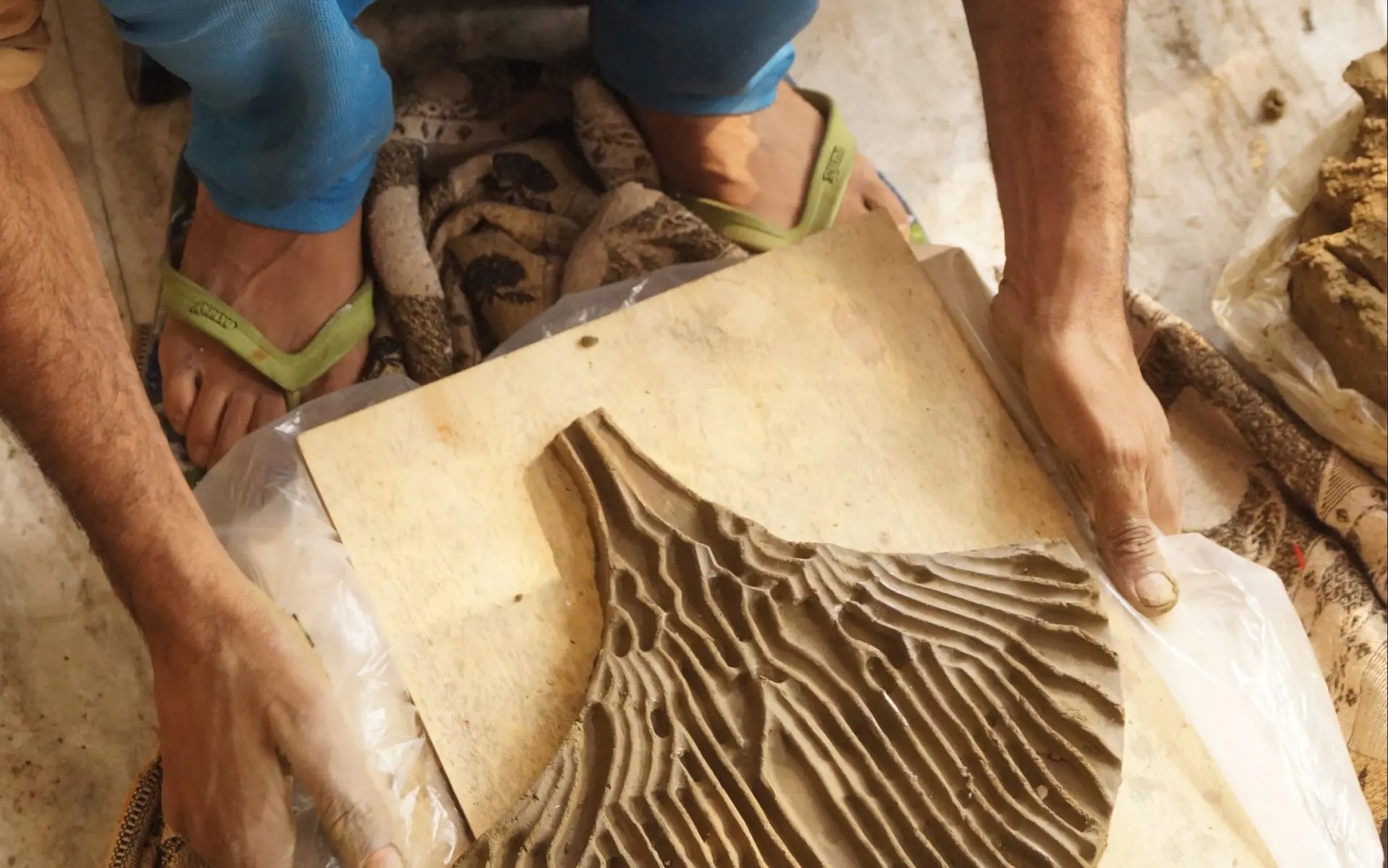
The Bio-ID Lab’s goal is to enable the rural community of artisans to regenerate water and reuse it for their manufacturing processes. In fact, the tiles are designed to be handily built on-site in areas with contaminated water sources: tiles are made simply by pressing clay or a similar low-cost local material into fan-shaped molds.
The leaf-inspired channels are filled with the algae hydrogel, which is supplied in powder form to be mixed with water.
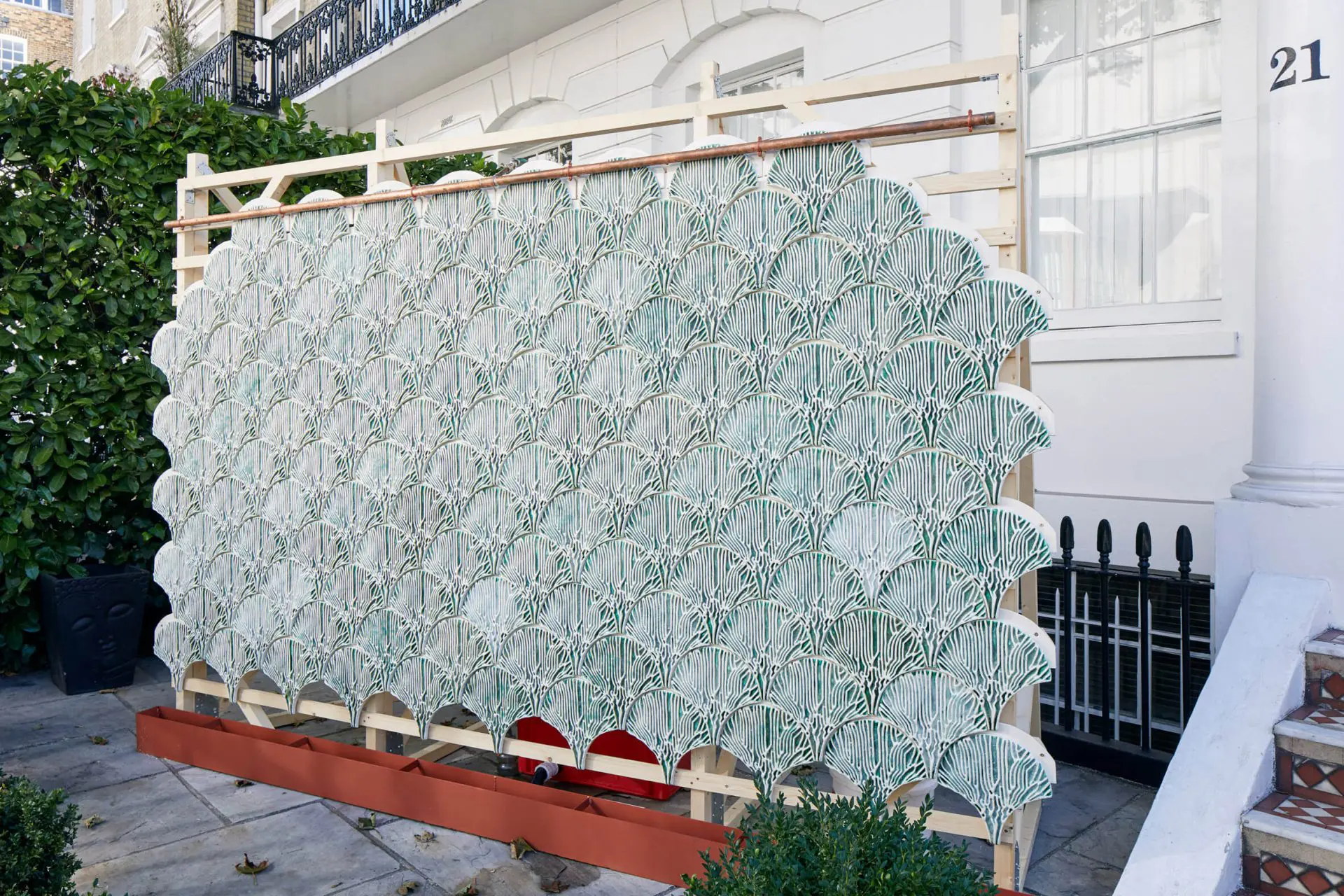
Thanks to its modularity Indus can be assembled into a wall where water is poured into the system from inlets at the top: the liquid flows through the channels containing the algae hydrogel and is collected at the bottom. When algae are saturated they can be replaced with new ones, continually reusing and refilling the tiles.
Each modular tile unit, whose size is easily customizable to suit the available space, can be individually removed without taking apart the entire system thanks to a half-lap joint. These features make Indus suitable for simple maintenance and adaption to the constraints of the local built environment.








